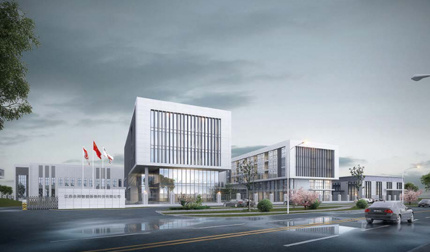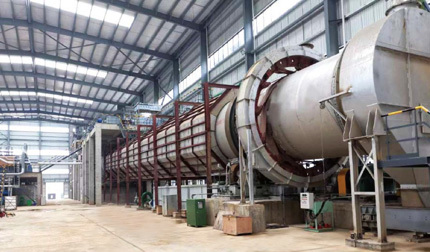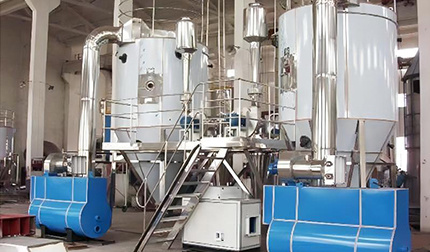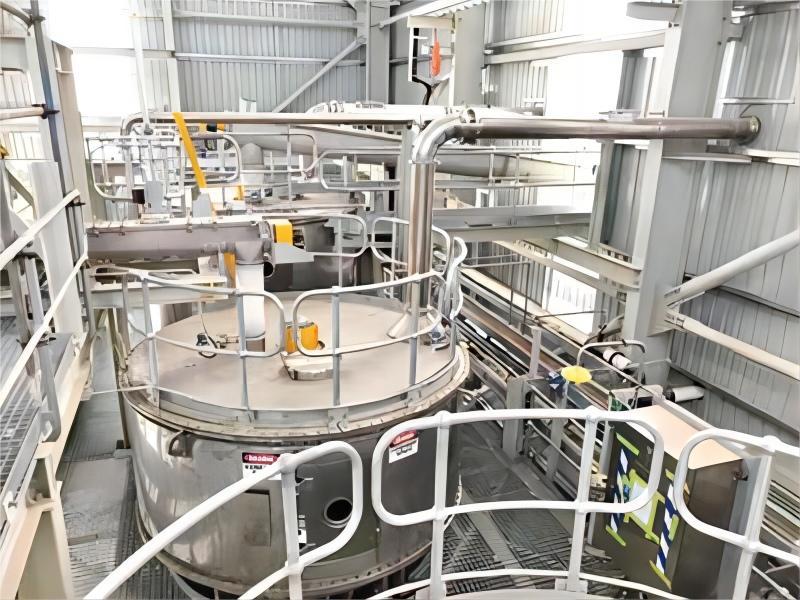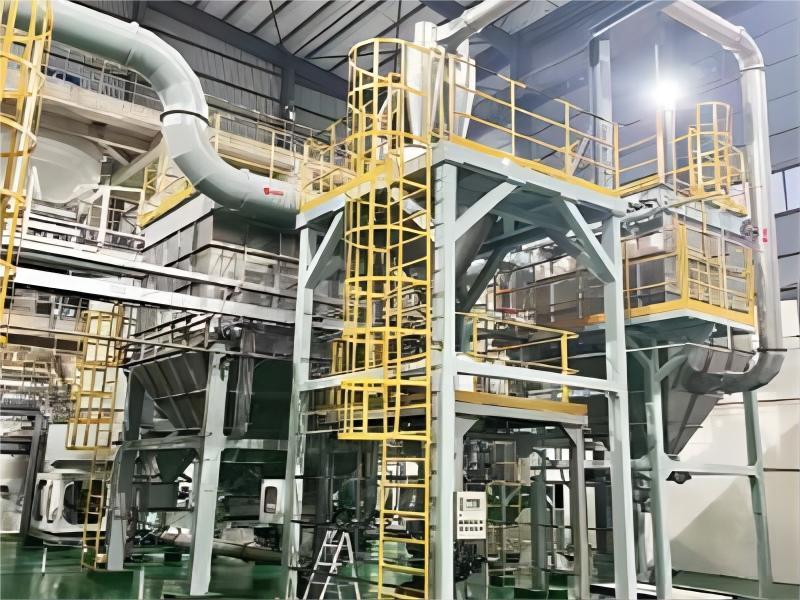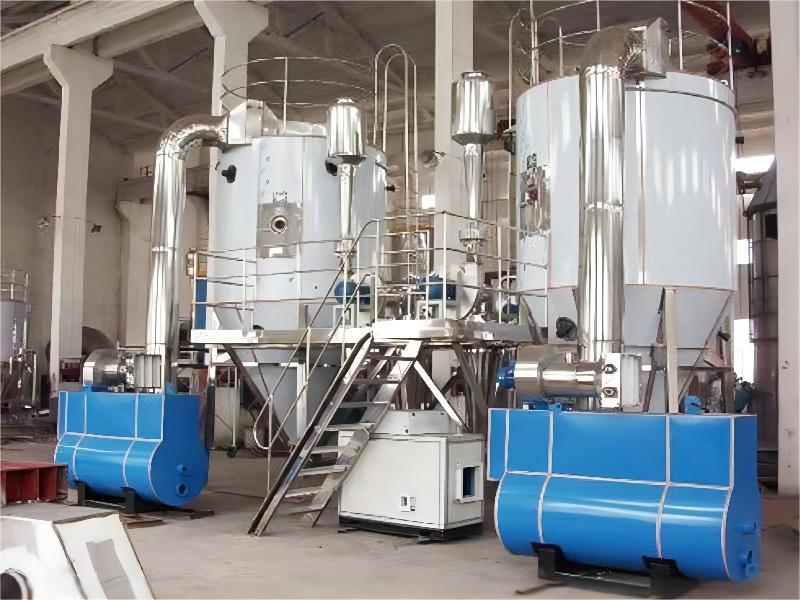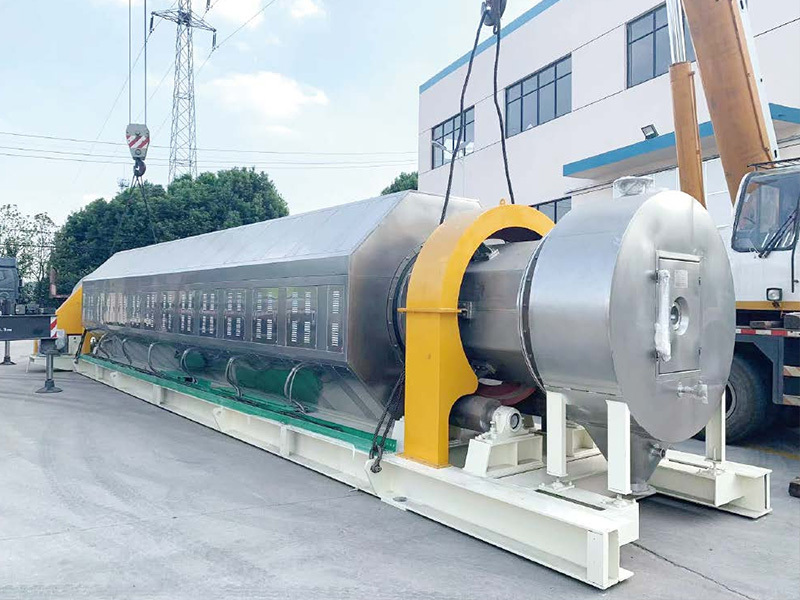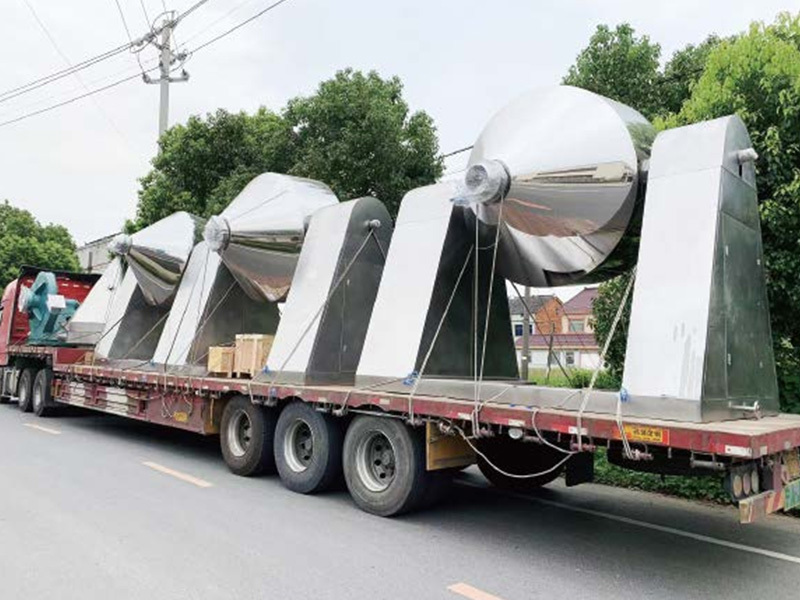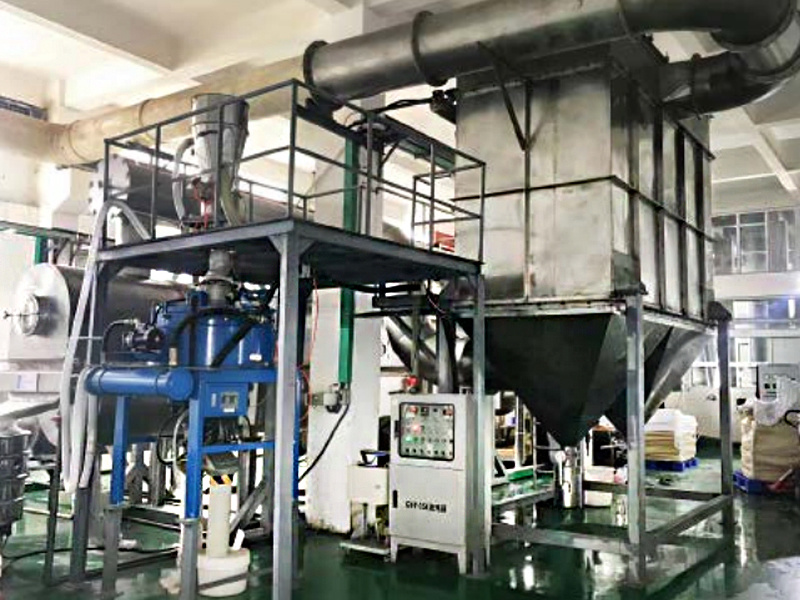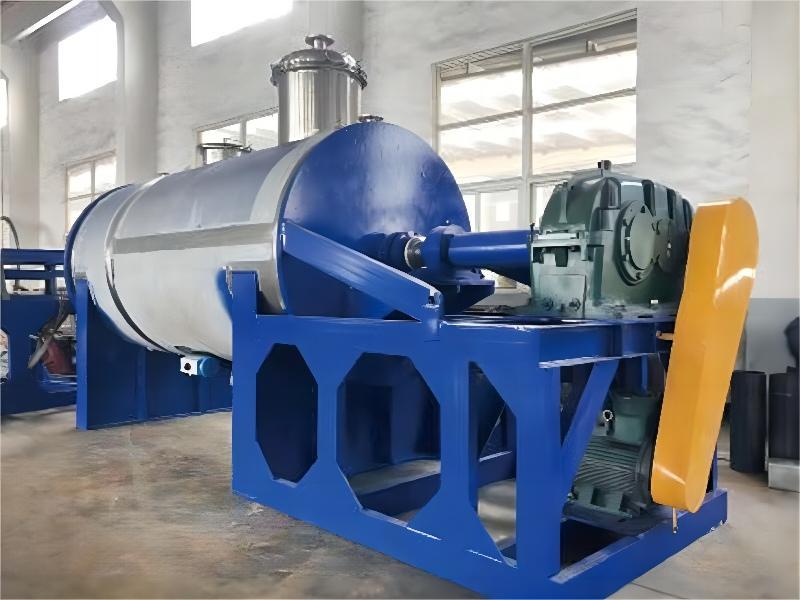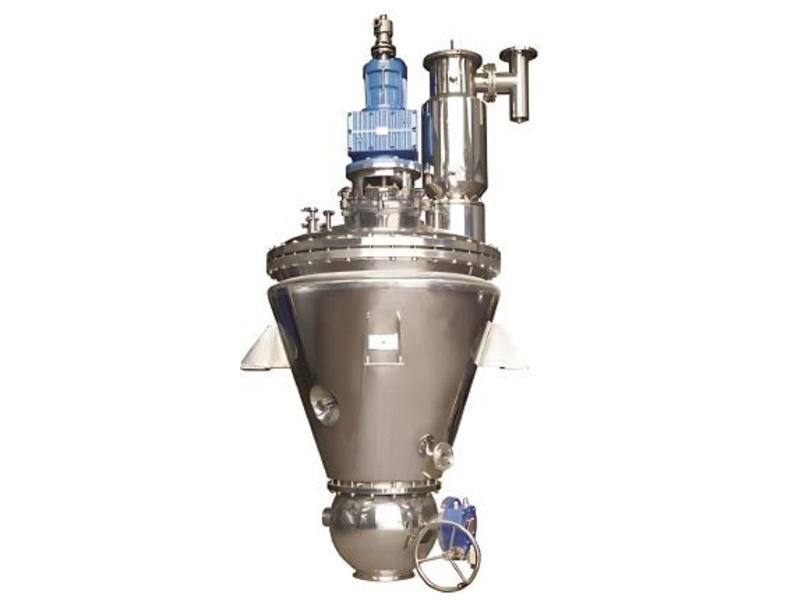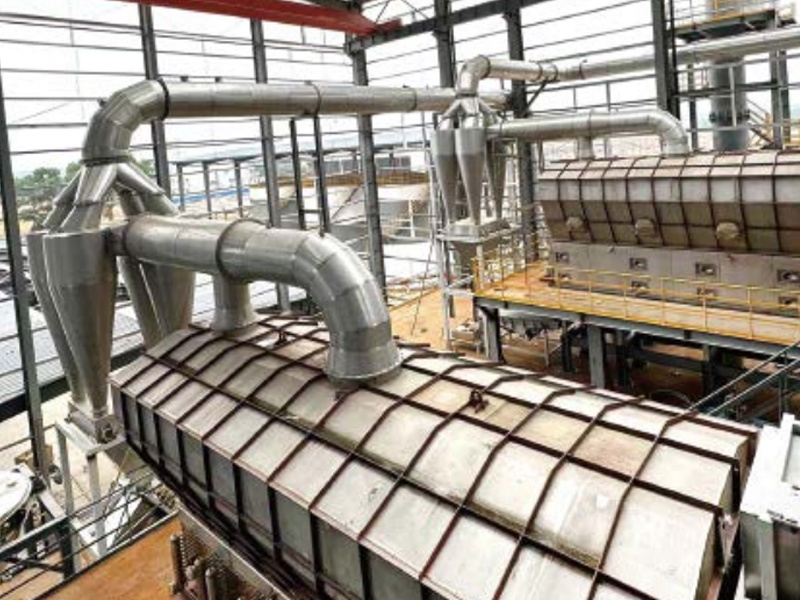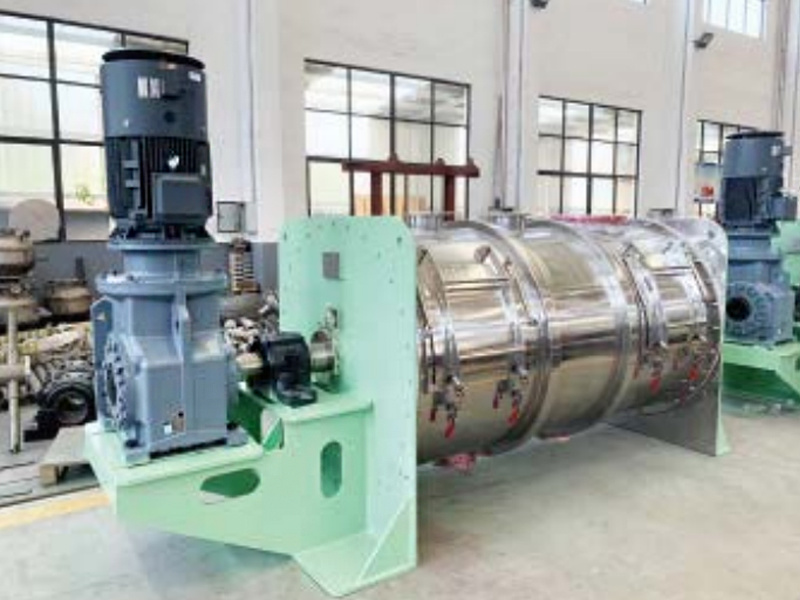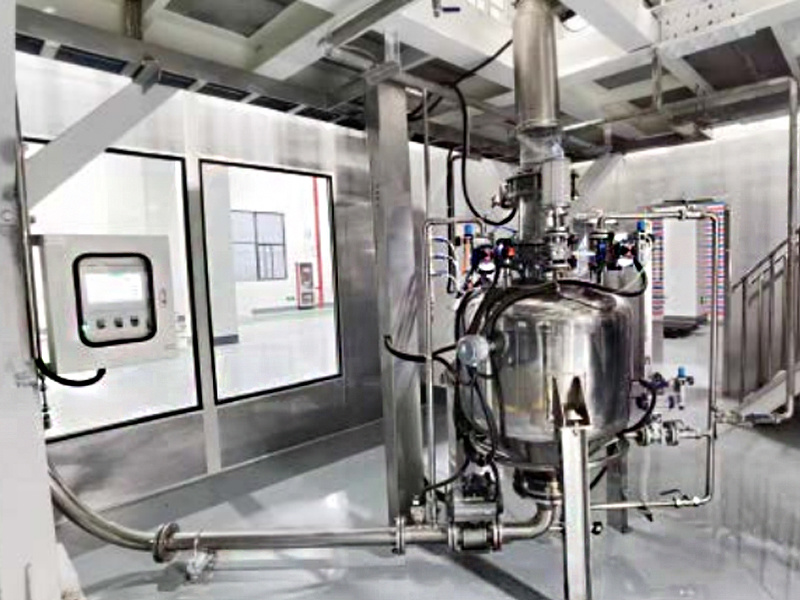Products
New energy material dryer series
The disc continuous dryer is an efficient conductive continuous drying equipment. Its unique structure and working principle determine that it has the characteristics of high thermal efficiency, low energy consumption, small footprint, simple configuration, convenient operation and control, and good operating environment; it is widely used in new energy materials, chemicals, medicine, pesticides, food, Drying operations in feed, agricultural and sideline products processing and other industries.
The hot air is cut into the bottom of the dryer and driven by the agitator to form a strong rotating wind field. The paste material enters the dryer by the screw feeder. Under the strong action of the high-speed rotating stirring paddle, the material is dispersed under the action of impact, friction and shear force. The massive material is rapidly crushed, fully contacted with hot air, heated and dried. The dry material after dehydration rises with the hot air flow, the classification ring intercepts the large particles, and the small particles are discharged from the center of the ring out of the dryer and recovered by the cyclone separator and dust collector. The undried or large materials are thrown to the wall by centrifugal force and fall to the bottom again to be crushed and dried.
PLG series spray dryers are divided into open type and closed type. They are mainly used in the drying production of battery materials, positive and negative electrode materials and sodium ion materials. They adopt high-speed centrifugal spray atomization technology (linear speed can reach 250 m/s) in line with the most advanced international technology. While realizing continuous drying production, they can obtain micro-spherical particles with uniform particle size, compact structure and good fluidity. To a large extent, high-speed centrifugal atomization technology, it can effectively improve or increase the packing density of the positive electrode material lithium iron phosphate, so that the monomer particles can reach 3 ~ 5μm and the moisture content of the finished product is 0.5%. The magnetic filtration technology is applied to effectively avoid the incorporation of iron ion impurities in the production process, so as to achieve the purpose of material purity and maintain the conductivity of the positive electrode material. The recycling of waste heat gas can achieve the production purpose of energy saving and emission reduction, and conform to the energy saving and emission reduction and low-carbon production mode advocated by the state.
Roaster is a kind of equipment for high-temperature heating treatment of powdery or cake-like materials, also known as calciners. According to the different energy sources used, it can be divided into four types: coal-fired furnace, gas furnace, oil-fired furnace and electric heating furnace. According to the heating mode, it is divided into two categories: direct heating and indirect heating. According to the operation mode, it is divided into two forms: continuous operation and indirect operation. The roasting furnace is mainly used for activation, crystal conversion, oxidation, pyrolysis, reduction, halogenation, sulfation and other technological processes, and is widely used in the production process of special materials in petrochemical, inorganic chemical, metallurgical construction and other industries.
The special double-cone rotary vacuum drying host for battery materials is a double-cone tank body. Under the vacuum state inside the tank, steam or heat transfer oil can be introduced into the jacket to heat the inner container. The heat is transferred to the wet material through the inner container, so that the water in the wet material is gasified. The low-speed motor drives the tank body to rotate. The material keeps going up and down, turning inside and outside, and replacing the heating surface. At the same time, the water vapor is continuously pumped away through the vacuum exhaust pipe of the vacuum pump, which speeds up the drying speed of the material and finally achieves the purpose of uniform drying.
The material enters the bed through the feed inlet, and jumps forward on the air distribution plate under the action of the exciting force provided by the vibration motor or other means. At the same time, the air is heated to a certain temperature after being filtered, and enters the downwind chamber of the dryer through the tuyere. The material is under the dual action of the vibration force and the hot air flow through the air distribution plate, in the suspended state, there is intense turbulence between the material particles and the heat medium in contact with the hot air flow, which strengthens the heat and mass transfer process. The dried product is discharged from the discharge port, and the evaporated water and waste gas are discharged into the atmosphere after dust is recovered by the cyclone separator.
ZPG series battery material horizontal stirring vacuum dryer is the use of water in the material in the vacuum state to reduce the boiling point of the characteristics of the equipment for drying. The equipment uses steam (hot water, heat conduction oil) to heat the jacket indirectly, and the water is evaporated and pumped out in time. Inside the dryer shell, the rake tooth is driven by the transmission shaft, and the rake tooth end is designed to have a certain angle with the axis. The main shaft rotates forward and backward to move the material along the axial direction to facilitate drying and discharging. Two or four percussion rods can be added inside the shell to facilitate the rapid drying and crushing of the material. The percussion rod is a hollow thick-walled stainless steel tube with the same length as the shell, which moves freely inside the shell. The percussion rod continuously knocks the material inside, so that the material is continuously broken (the material obtains a larger specific surface area) to accelerate the drying process, and the quality of the finished material is better.
The machine is equipped with a heating sleeve on the heating funnel, and the heat source uses hot water, heat transfer oil, and low-pressure steam to keep the inner wall of the funnel at a certain temperature. The frequency conversion motor rotates the single spiral mixer through the parallel spiral gear reducer, so that the material rotates along the conical cylinder and pulls from bottom to top. After the material reaches the highest point, it automatically flows to the vortex center and returns to the bottom of the conical cylinder under the action of gravity and inertia. The whole process makes the material forcibly heated in the conical cylinder, with relative convection and mixing. The heat diffuses in the material to make the material move irregularly in all directions, the high-frequency heat transfer and exchange of the material with the single screw belt and the surface of the cylinder wall are completed, and the effect of heating and drying is achieved in a short time. In order to make the material internal water evaporation, under the action of the vacuum pump, water vapor from the vacuum pump, such as the need to recover the liquid can be added condenser, recovery liquid storage tank recovery. After the drying is completed, open the lower discharge valve to discharge the material.
The internal heating fluidized bed drying technology is an advanced drying technology developed on the basis of ordinary fluidized bed drying and indirect conduction drying. The tube heat exchanger is built into the fluidized bed, and the fluidization technology is applied to strengthen the heat transfer between the solid particles and the heat medium, and the drying thermal efficiency and drying intensity of the dryer are improved.
The horizontal ribbon mixer for battery materials consists of a mixing chamber body, a stirring device, a driving device, etc. The O-shaped tubular chamber is equipped with a double-layer different-direction ribbon coiled stirrer shaft. The outer spiral belt is driven by power, and its coiled form matches the rotation direction to push the material from the two ends of the O-shaped chamber to the central zone, while the inner spiral belt pushes the material from the middle to the two ends to form convection mixing. At present, the loading volume of the largest model produced by our company has exceeded 30m ³.
The positive pressure dense phase pneumatic conveying system uses compressed air as the conveying medium. Material in the pipeline at a lower speed, dune state, fluidized or agglomeration state of transport is called positive pressure dense phase pneumatic conveying. The air source generally used is an air compressor, and the conveying pressure can be from 0.2MPa to 0.5MPa according to different working conditions.
The negative pressure dilute phase pneumatic conveying system uses Roots vacuum pump as the power source, the pressure of the conveying pipeline is in a low-pressure vacuum state, the wind speed in the pipeline is about 10~30 m/s, and the material is atomized in the pipeline. The starting pressure of negative pressure conveying is equal to or close to atmospheric pressure, and the end pressure is between -10 and-60KPa, and the vacuum degree of the pipeline gradually increases along the conveying pipeline. Negative pressure dilute phase pneumatic conveying system is also called vacuum dilute phase pneumatic conveying system.



